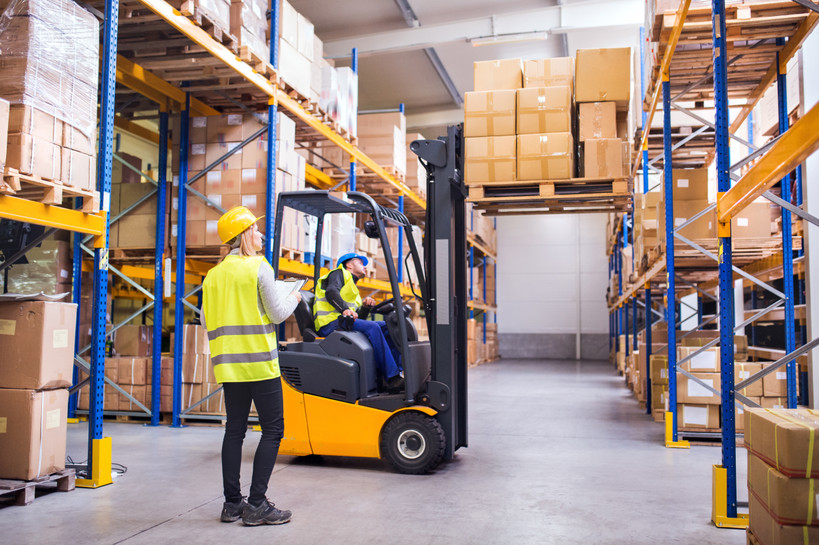Forklift safety is critical for a wide variety of workplace environments. Heavy machinery, in general, can be a challenge to operational safety, and statistics show that almost 100 people are injured by forklifts every day.
For the employee, these injuries can lead to chronic pain, post-traumatic stress and, sometimes, even death. For you, your management team, and the employee’s coworkers, it can cause emotional and psychological distress. In the worst cases, these injuries can lead to lawsuits and financial damage to your company, in addition to increased workload and lost hours.
To combat these issues, many solutions have been developed for increased forklift safety on the job site. From aisle width guidelines to the safe operation of heavy equipment, you can be empowered to maximize safety, minimize random happenstance, and optimize productivity with these forklift safety solutions.
Forklift Safety Training
Unsurprisingly, the greatest number of forklift-related injuries occur as a result of user inexperience. Therefore, it’s vital that your workplace establishes forklift safety guidelines for all employees.
You’ll notice that we didn’t differentiate between “drivers” and “other employees,” because there are forklift rules and regulations that should be followed by everyone. Of course, operators will certainly need to be provided with forklift driving tips and best practices, but there’s information that pedestrians will need to know as well.
Any employee or visitor who needs to travel around or through spaces where forklifts operate must understand common forklift safety tips. You and your management team must develop forklift safety procedures specifically for your workplace, and ensure that all employees are trained on them.
Forklift Aisle Width Guidelines
Regulations from OSHA for aisle width for forklifts simply require “sufficient safe clearances.” However, in an official interpretation of the OSHA standard for aisle width, it’s stated that the minimum forklift aisle width is 4 feet. Furthermore, for machinery that is greater than 4 feet wide, the recommended forklift path width is 3 feet broader than the largest equipment to be used in your facility.
How to Drive a Forklift Safely
First, it’s critical that all forklift operators are properly trained and officially licensed. Obviously, this is one of the most crucial solutions for ensuring safe forklift operations.
Second, you should confirm that the width of all aisles is sufficient for their purpose. Forklift lanes should be wide enough to accommodate the largest forklift in your facility without snagging on product storage. Pedestrian lanes should be capable of accommodating traffic without interfering with safety or operational effectiveness.
Finally, once safe traffic patterns are established, you must ensure that all visitors can clearly see, and instantly understand, the routes and hazards that are present. You can use forklift floor signs to designate areas where employees must remain mindful of machinery traffic, and heavy duty floor marking tape to emphasize storage lanes, forklift aisles, and pedestrian walkways.
Further, safety tape for floors is ideal for indicating hazards, fire-protection apparatus, and safety equipment. Tape solutions and forklift signs can minimize workplace incidents by keeping all employees and visitors aware of the dangers inherent to the area.
Maximize Forklift Safety in Your Workplace with ifloortape.com
We understand that it can be a lot of work to implement a training program and figure out the best floor tape to use in your facility. At ifloortape.com, we’d love to help. If you want to know more about the best forklift safety solutions for your workplace, reach out to our team today.

 US Dollars
US Dollars
 Canadian Dollar
Canadian Dollar
 Mexican Peso
Mexican Peso
 Brazilian Real
Brazilian Real
 Colombian Peso
Colombian Peso
 Chilean Peso
Chilean Peso

